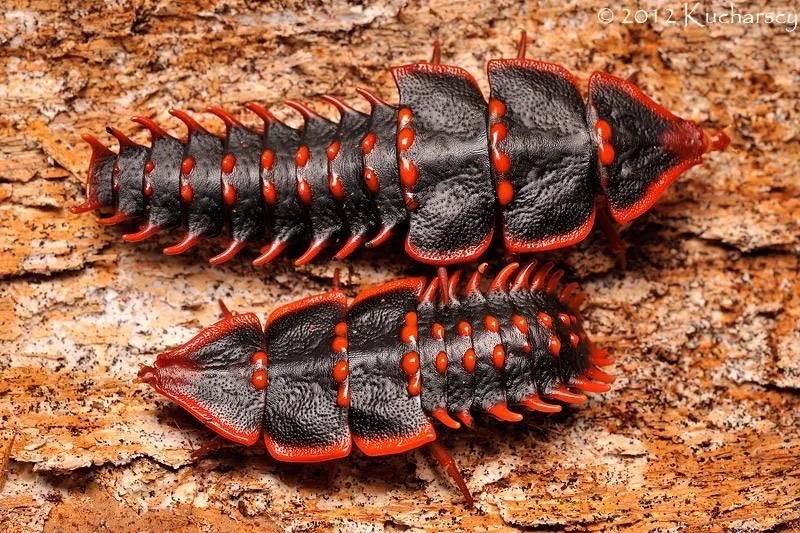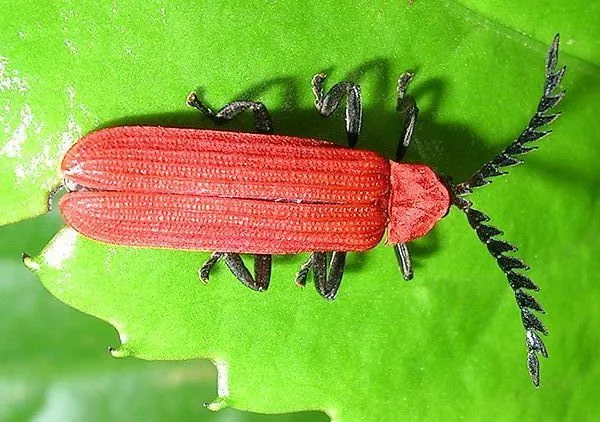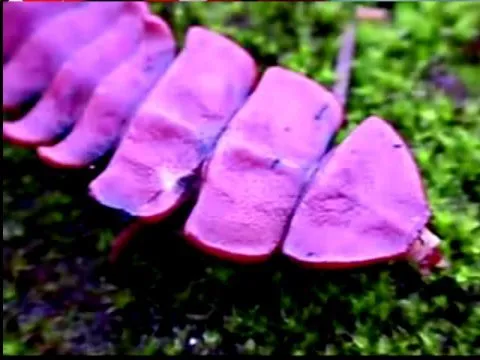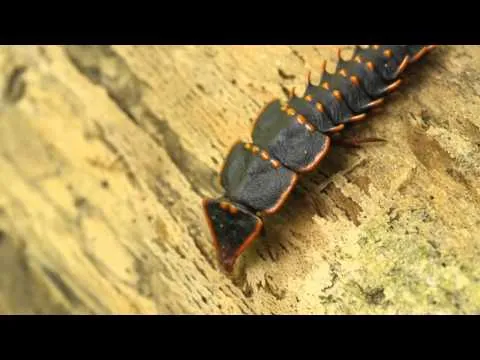As my friend @janus-face pointed out in a comment yesterday, I haven't posted any strange animals in a while but now I am back on track! So, what I have for you today is one of the weirdest insects and definitely the weirdest beetle you are likely to ever encounter. Like always, let's first start with a photo:

Female Trilobite beetle / Duliticola paradoxa (credit)
You know what... Photos don't do this critter enough justice, so here's a video:
The creature depicted above is a female beetle from the genus Platerodrilus. Beetles from this genus are commonly known as trilobite beetles because their flat dark bodies with the large scales are reminiscent of trilobites, a group of marine arachnomorph arthropods that have long gone extinct. But in reality, only the female representatives look like trilobites, males actually look like tiny regular beetles..But more on that later!
As a sidenote, trilobite beetles often appear in the scientific literature under the name "Duliticola", which is now an obsolete term.
 Trilobite Beetles (credit)
Trilobite Beetles (credit)
Most trilobite species are found in tropical rainforests, in India and South-east Asia. Females are about 4 - 8 cm in length while males are dwarfed in comparison, with a length of only 8–9 mm.
Interestingly, while the first female trilobite beetle was discovered back in the 1800s, it took researchers more than a hundred years to find a male one!
Trilobite beetles belong to the family Lycidae, a group of elongated beetles commonly known as net-winged beetles. Most of the species in this family share a common trait, females look a lot different than males (sexual dimorphism). As mentioned before, this is also true for trilobite beetles. Other than their huge difference in size, female trilobite beetles retain the larval form during their whole life (neoteny) while males look like regular, tiny beetles. Unfortunately, I couldn't find any actual photo of a male specimen to show you the difference, but apparently they look something like this:

Male trilobite beetles look something like this. Pictured, a male from the same family, Lycidae (credit)
So, other than how they look and where to find some species, we know very little about trilobite beetles. For many species we don't even know how the male representatives look like because male trilobite beetles are a very rare sight and even when one is spotted there is no way to tell (other than genetic testing) the species it belongs too, unless we catch it having sex with a female. For example, their diet is controversial, some assume they are predatory animals feeding on other small insects, while others believe they feed on stuff like fungi, slime, mould, or rotting wood juices. For now, nobody seems to know for sure.
Their reproductive patterns are also a large mystery! Since the first trilobite beetle was discovered back in the 1800s, scientists have only observed them mating only two times!
It's possible that at this point you might actually have more questions than when you you started reading this post. But really, there's not much else substantial to say about these elusive creatures so I will conclude this post with some more amazing photography photos and a few videos. Btw, if you enjoyed this prehistoric-looking creature make sure to stay tuned in, you will love tomorrow's strange animal :D
 Close up of a trilobite beetle head. It's really small and fully retractable when it gets scared or shy! (credit)
Close up of a trilobite beetle head. It's really small and fully retractable when it gets scared or shy! (credit)
 (credit)
(credit)
Don't forget to click the various links provided in the article for more amazing photography and videos of this bizarre critter. Finally, here's a totally unrelated video showing a peculiar friendship between an elephant and a dog. Hope it makes your day better:
 More Strange Animal Stuff
More Strange Animal Stuff
If you enjoyed reading this post I am sure you will love some of my previous work. Here are some of my latest posts:
- Clathrus archeri: Weird Alien-Like Eggs Hatch Into Weird Octopus Thing
- The Horseshoe Crab Named After Darth Vader
- Lobster with Pepsi Tattoo Fished In Canada !
- The Jesus Christ Lizard: A Lizard That Can "Walk" On Water
- It's a Scorpion...It's a Fly...It's a Scorpionfly! (Panorpa communis)
- Hagfish Have One Of The Weirdest And Coolest Defense Mechanisms
- Weird MRI Photos, 3-Eyed Beetles, Deep Sea Creatures And Other Cool Animal Stuff
- Can You Guess What Animal Has The Biggest Penis In The World?
- Meet The World's Strangest Ants




